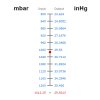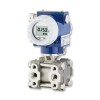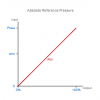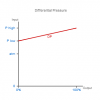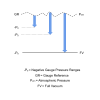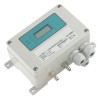The pressure range is the most complicated and confusing specification parameters to define for a pressure sensor. If you do not fully understand the different types of pressure that can be measured, you are likely to end up reading pressures inaccurately, or worse still, damaging the sensor before you have had a chance to correct the situation.
The two main questions that you need to ask yourself are, what is the range of pressure I need to measure over, and what baseline pressure will it be relative to?
Reference Pressure
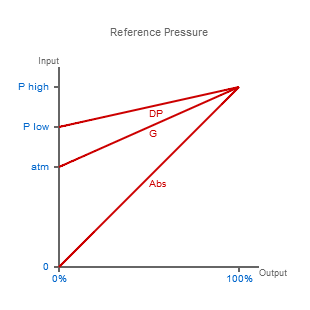
If you are measuring the direct pressure of a gas or liquid process then you will need either a gauge (g, rel) or absolute (abs, a) reference pressure range depending on whether you need to track relative to atmospheric air pressure changes (zero output = atmospheric pressure) or measure independently of atmospheric pressure changes (zero output = perfect vacuum). This will define the baseline pressure required, and will dictate the type of pressure sensor needed, since typically a pressure sensor will be manufactured to only measure gauge or absolute pressure, and cannot be modified once it has been built.
If you are measuring pressure between two points such as either side of an extraction fan, or across a filter, then you will need a differential pressure (dp) sensor.
Pressure Units
Pressure ranges are typically specified by the manufacturer in bar (bar)or pounds force per square inch (psi) for medium to high pressures, and millibars (mbar), hectopascals (hPa), pascals (Pa) or inches of water column (inH2O, inWG, inWC) for low pressures. If your required pressure range is in other units then use a pressure converter to determine the pressure in common units.
Over-Range Pressure
It is important to think about the maximum pressure to be measured and the likely peak pressure that could be generated by the measured process. If there is a large difference between the two pressures then choosing a pressure sensor with a high overpressure rating to match the peak pressure is imperative to prevent calibration disturbance, mechanical damage or failure of the sensor.
Negative Pressure
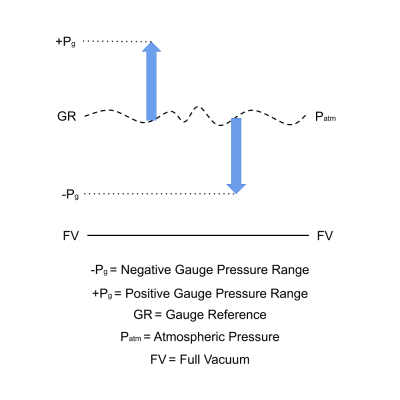 Occasionally it is necessary to measure negative pressure or pressures below the baseline reference pressure. It is only possible to do this with a gauge reference or differential pressure sensor. For example you may want to measure suction or vacuum pressure which are pressures between full vacuum and atmospheric pressure. Another example of measuring negative pressure would be to apply a reverse the differential pressure across an air filter periodically, as a preventive maintenance measure to clean the air filter and improve air flow.
Occasionally it is necessary to measure negative pressure or pressures below the baseline reference pressure. It is only possible to do this with a gauge reference or differential pressure sensor. For example you may want to measure suction or vacuum pressure which are pressures between full vacuum and atmospheric pressure. Another example of measuring negative pressure would be to apply a reverse the differential pressure across an air filter periodically, as a preventive maintenance measure to clean the air filter and improve air flow.
Compound Ranges
Negative pressure ranges can also be combined with positive pressure ranges to create a compound range or a bidirectional range. These can be used to combine vacuum and positive pressure ranges, or for measuring ventilation pressures in a duct where the air could be flowing in either direction.
Liquid Head Pressure
It is also very common to use pressure sensors to measure liquid level by measuring the liquid head pressure. These pressure ranges are often specified in meters or feet of water column. Due to the variance in liquid density it is also possible to have specifically scaled ranges, for example 1.078 bar for a 10 metre high tank which contains a liquid of a slightly different density to water.
Related Help Guides
- Can you have a minus 20 psi gauge vacuum measurement range
- What is difference between working, burst and over pressure
- Measuring vacuum with negative gauge or absolute ranges
- What is the difference between gauge and absolute pressure measurement
- What is the difference between vacuum and absolute pressure
- Can you measure vacuum using a gauge pressure range
- What does negative and positive gauge pressure mean
- Measuring negative pressure using a positive differential pressure range
Related Technical Terms
- Bidirectional
- Burst Pressure
- FS – Full Scale
- Gauge Reference Pressure
- MSL – Mean Sea Level
- Negative Gauge Pressure
- Reference Pressure
- SG – Sealed Gauge
- Static Line Pressure
- Vented Cable
- Vented Gauge

